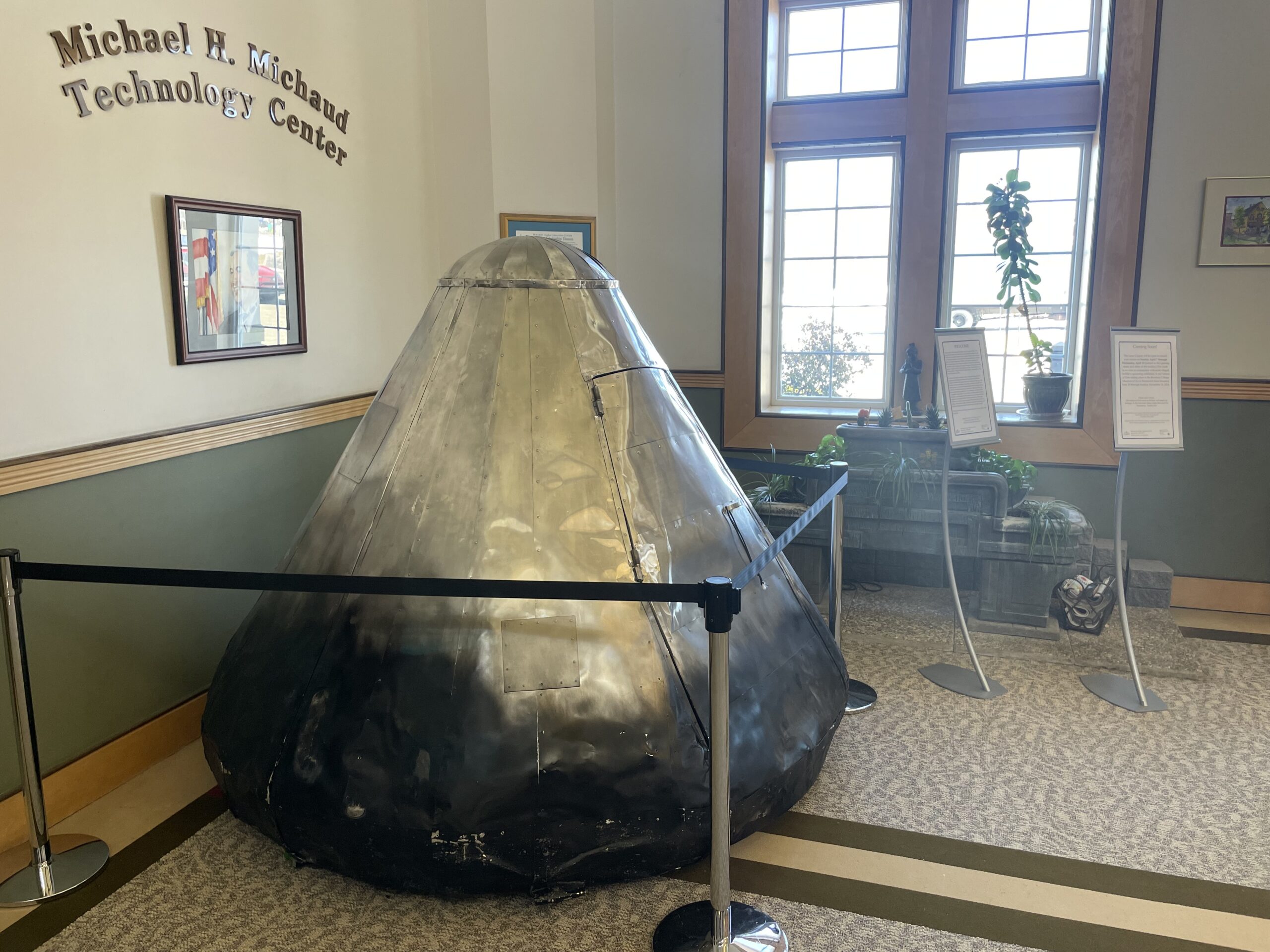
HOULTON, Maine — An interactive space capsule created by an artist will be in Houlton this weekend. Visitors can climb inside it to record their stories about Maine, the eclipse or family tales.
The roughly 6-foot by 7-foot aluminum sculpture, created by New York-based artist Abigail DeVille, combines the history of the 1969 Apollo 11 first manned lunar landing with the stories, hopes and dreams of those who choose to sit inside it and record their thoughts for future art installations.
The Lunar Capsule, first installed at the Bronx Museum of Arts as part of a larger work, will be at the University of Maine at Presque Isle’s Houlton Education Center from Sunday, April 7 to Wednesday, April 10.
DeVille’s inventions, often created with found objects and discarded materials, are deeply rooted in the stories and energies of their past. The interior of the capsule, not an actual replica of Apollo 11, includes gold fabric, gold leaf, a chair and nostalgic recorder that harkens back to the technological advances of the 1960s.
Visitors enter the capsule through an open door. They sit inside to digitally record their audio stories by pressing a button on the chair. There is no charge for the experience.
DeVille has said that the experience is meant to be reminiscent of the way families used to orally share tales.
Made possible through the efforts of the Bowdoin College Museum of Art and the University of Maine at Presque Isle, the installation invites visitors to reflect upon
the relationship of human beings to the cosmos and to their own communities here on earth, said Anne Goodyear, co-director of the Bowdoin museum.

Once the stories are gathered at the eclipse, they will become part of a larger work, In the Fullness of Time, at Bowdoin College in Brunswick. It is a continuation of DeVille’s “Bronx Heavens,’’ organized by The Bronx Museum of the Arts.
The lunar capsule channels the excitement people had when people first set foot on the moon and the excitement of our era and the solar eclipse, Goodyear said.
“It is an aspect of the art that threads a line between the historic and the future, ” she said.
The June through November Bowdoin exhibition, that is free to the public, will feature DeVille’s large-scale installations and sculptural works that are part of her Libertas series, as well as a newly created piece related to Bowdoin College’s history. Pieces of DeVille’s works will be in Bowdoin’s Becker Gallery, Center Gallery, Rotunda, Halford Gallery, Focus Gallery, Media Gallery, Bernard and Barbro Osher Gallery.
When DeVille talks about her works, she said that she believes human beings are time capsules of all of human history and that our genome contains the coding of the last 500 years of ancestry that is imprinted on each of us.
“We silently traverse centuries in our daily perceptions of self,” she said during a panel discussion at the Bronx Museum of the Arts.
DeVille asks about what binds us together and for her upcoming exhibition, she hopes to collect, examine and disseminate the ruminations of the people who come together in Houlton for the eclipse.
“The same elements of stardust, the universe’s building blocks, are in our bodies,” she said about her upcoming work in a statement. “We are little lights, dimmed, concealed, flickering, and shining brightly through the darkness of everyday living.”
An earlier version of this story did not include University of Maine at Presque Isle and incorrectly stated the capsule was made of steel.






